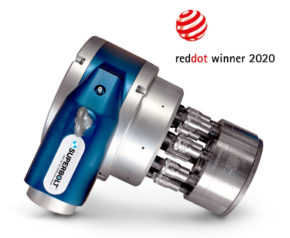The global bolt market for fasteners is estimated to grow at a CAGR of over 4.1% from 2020 to 2027 — reaching a valuation of over U.S.$43,868.4 million. The report, developed by Acumen Research and Consulting, provides an analysis of the bolt market for the period 2016-2027, wherein 2020 to 2027 is the forecast period…
What is a castellated nut and where is it used?
Written by Jody Muelaner A castellated nut, also known as a castle nut, has three notches in one end, giving an appearance similar to the crenellated battlements of a castle. Castellated nuts are a positive locking device that’s used to ensure that the nut remains affixed and resists vibration. These components are used in combination…
“Family is our fastener:” Industrial Rivet celebrates more than 100 years of success
When Taryn Goodman’s great grandfather (Willie Goodman) founded Industrial Rivet & Washer Co. in 1912, he likely never expected the company to last more than 100 years or to maintain one of the industry’s largest inventories. He was simply offered an opportunity to sell rivets in New York City and grew to become an expert…
Building the future with Suburban Bolt
The fastener industry was far from Nikki Gordon’s mind when she began her career as a marketing specialist. It may have stayed that way, too — she worked for Gannett, the second-largest media company in the world at the time — but one of her clients at Gannett was Suburban Bolt and Supply, a family…
Bolt market size to hit about $43.86 billion by 2027
The bolt (fastener) market size is expected to be worth near U.S.$ 43,868.4 M by 2027, says by Acumen Research and Consulting, a global provider of market research studies Bolts are a form of threaded fastener with an external male thread, these are closely related to screws, but have several practical differences. A bolt is…
Chicago Rivet & Machine offers custom manufactured riveting machines
Chicago Rivet & Machine Co., an ISO/TS 16949 manufacturer of custom cold-headed parts and manufacturing standard riveting machines, offers customized parts and equipment. For example, the company can design and build custom riveting machines that can be used in virtually any industry. It also provides repair and consulting services. According to Chicago Rivet & Machine:…
Why do bolts loosen?
By Julie Pereyra, Sales Engineer Nord-Lock Group Depending on the application, bolt loosening can have profound consequences. One loose bolt can bring a whole production plant to a standstill and cost a company thousands. In other applications, loose bolts can pose a significant safety hazard. So, what are the bolt loosening reasons? Broadly speaking, there…
Nord-Lock wins prestigious Red Dot Design Award for Superbolt Tool
Nord-Lock Group, a global provider in bolted solutions, received one of the world’s most prestigious design awards: the Red Dot Award. It won ”Best Product Design 2020” in the tools category for the Superbolt Tool. “I am extremely proud that the Superbolt Tool was judged not only good enough to be entered into the Red…
What is a lock nut and how does it work?
Written by Jody Muelaner A lock nut is a nut that will resist loosening under vibration and torque. There are many types of lock nut but they can be broadly divided into those which use friction to prevent loosening and those that have some form of positive locking device. Friction lock nuts Lock nuts that…
What is a flat nut?
Written by Dr. Jody Muelaner Flat nuts are a simple nut that is stamped from sheet metal. They can be considered a type of speed nut, providing the functions of a sprung washer and a nut in a single component. They also have a degree of friction locking and they are extremely low profile. Flat…










